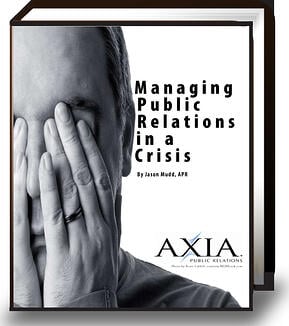Crisis Communications First Response: Be Prompt, Smart and Practiced
By Phillip BergmanFebruary 18, 2013

Crisis Communications
Being quick to respond in a crisis situation is critical to a successful outcome, but not at the cost of providing the wrong response, even in a timely manner. It’s better to be late with the correct commentary than early with a poorly conceived statement.
Such was the case with Subway’s initial comments to viral reports from Australia and other countries that the franchise’s “footlong” sandwiches do not always measure 12 inches.
This was the company’s initial reply, appearing on the Australian Subway Facebook page:
“With regards to the size of the bread and calling it a footlong, ‘SUBWAY FOOTLONG’ is a registered trademark as a descriptive name for the sub sold in Subway® Restaurants and not intended to be a measurement of length. The length of the bread baked in the restaurant cannot be assured each time as the proofing process may vary slightly each time in the restaurant.”
As it does not pass any reasonable expectation that a product named for a unit of measure is not intended to meet that unit of measure, this is not a credible response. Subsequently, the company issued the following statement:
“We regret any instance where we did not fully deliver on our promise to our customers. We freshly bake our bread throughout the day in our more than 38,000 restaurants in 100 countries worldwide, and we have redoubled our efforts to ensure consistency and correct length in every sandwich we serve. Our commitment remains steadfast to ensure that every Subway Footlong sandwich is 12 inches at each location worldwide.”
What went wrong that enabled the initial, misguided statement? It’s certain that one of the following problems occurred:
- Subway did not have a sound policy in place that provided for a well-conceived corporate response, not a country-specific reply outside the review of corporate officials.
- Subway did have a policy in place and reviewed the statement at the highest levels, but leaned too heavily on a legal interpretation rather than a common-sense response prepared by a strong-willed, experienced communications executive or outside communications counsel.
In a crisis it’s critical to have a communications executive at the top of the organization who has both the will and expertise to take charge and make sound decisions. It’s also essential for that executive to have the respect of the CEO and other top officials. As importantly, every organization should practice ahead of time the detailed planning required for a response to any type of crisis. This includes managing every possible piece of minutia. Examples include:
- Having the cell phone numbers of key internal contacts around the world
- Knowing who will draft the statement, who will approve it, who will release it and via which channel(s)
- Having strong protocols and controls in place for all official communication channels, social media and otherwise
- Evaluating the cost implications of commitments made in the statement (Note: Costs should be considered in the context of always taking the right course of action, while evaluating cost-effective ways to do so if options are available. In some cases the costs will be astronomical and hard to calculate, but failure to take the right action could be far more costly and even put the company out of business.)
- Setting in motion the operational and logistical implications of the commitment(s) made in the statement and reporting these actions as part of the statement
- Making certain all facts are available to ensure accuracy of the statement, not just promptness (Note: This does not justify a lack of any communication. In many instances the initial statement will be an acknowledgement of the seriousness of the issue and that information is being gathered and a more detailed statement will be forthcoming.)
The foundation for all of these crisis plans must be a strong corporate value system that reflects a “do the right thing” culture from the top down. Companies that have a sound corporate culture and a thoughtful, organized approach to crisis communications are likely to weather the storm of a crisis.
Get Our Ebook:
Managing Public Relations in a Crisis
Topics: media relations, public relations, PR tips, crisis communications



Comment on This Article